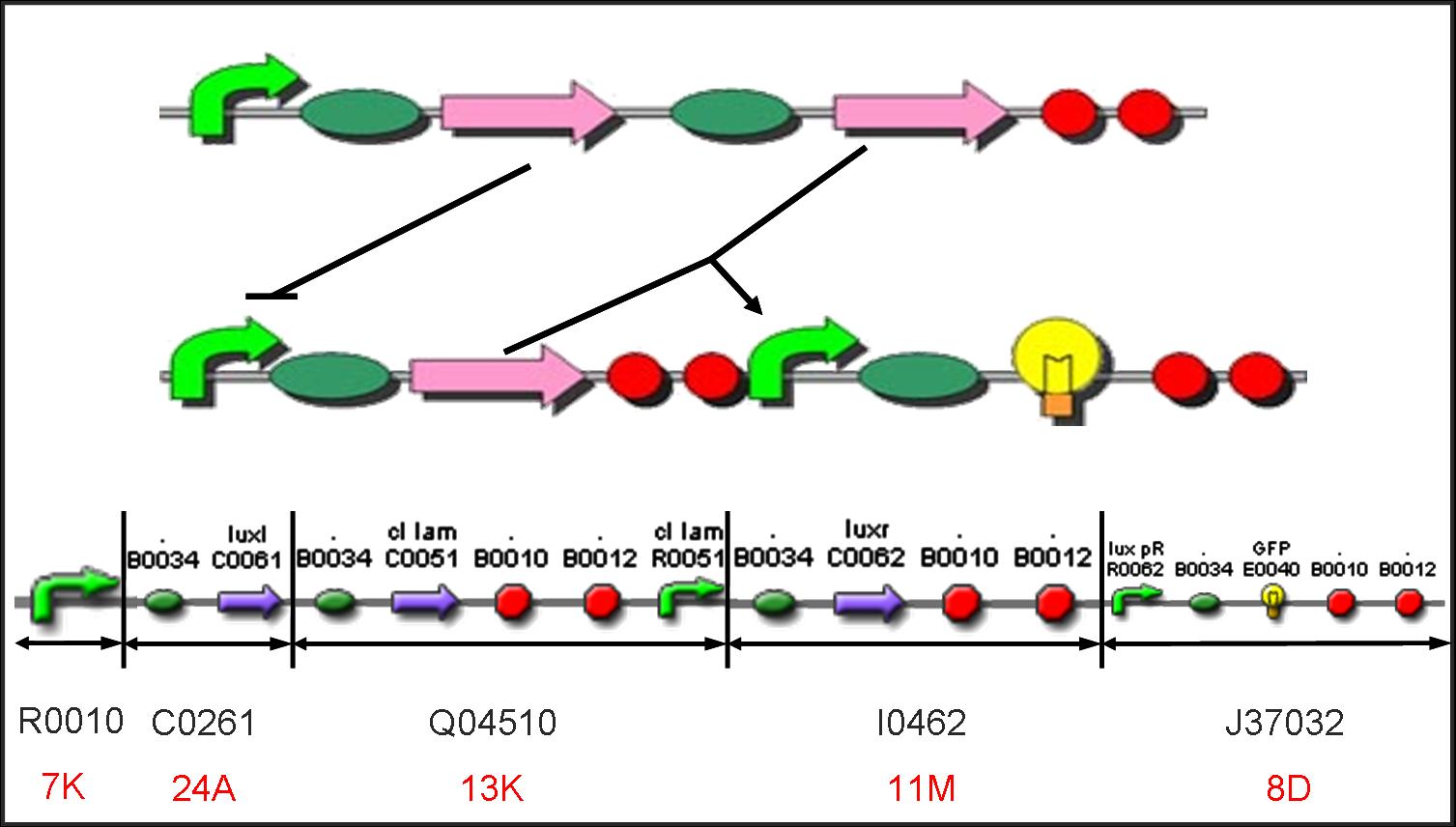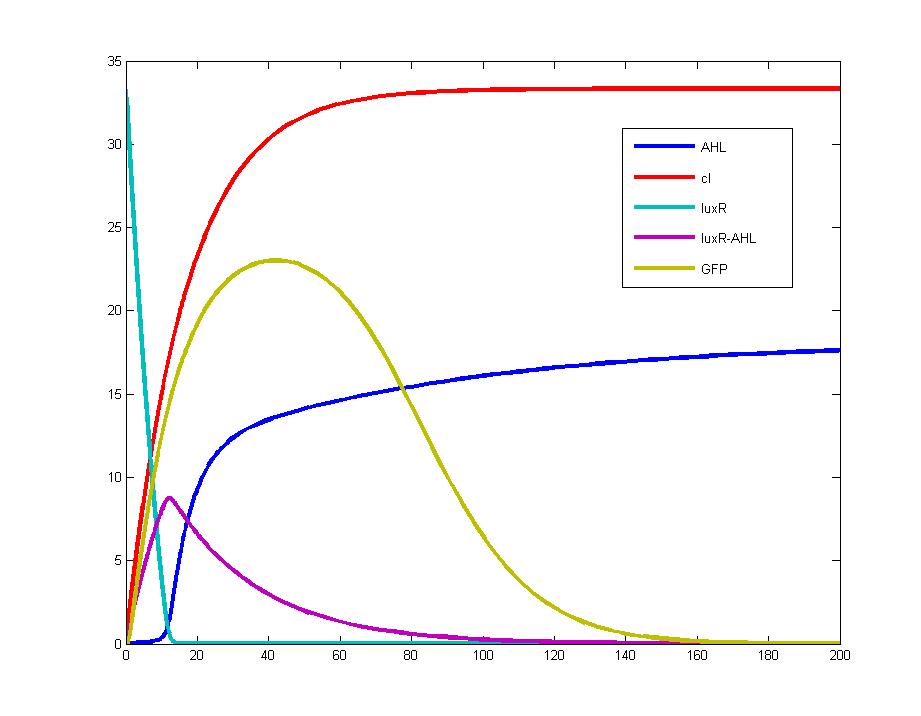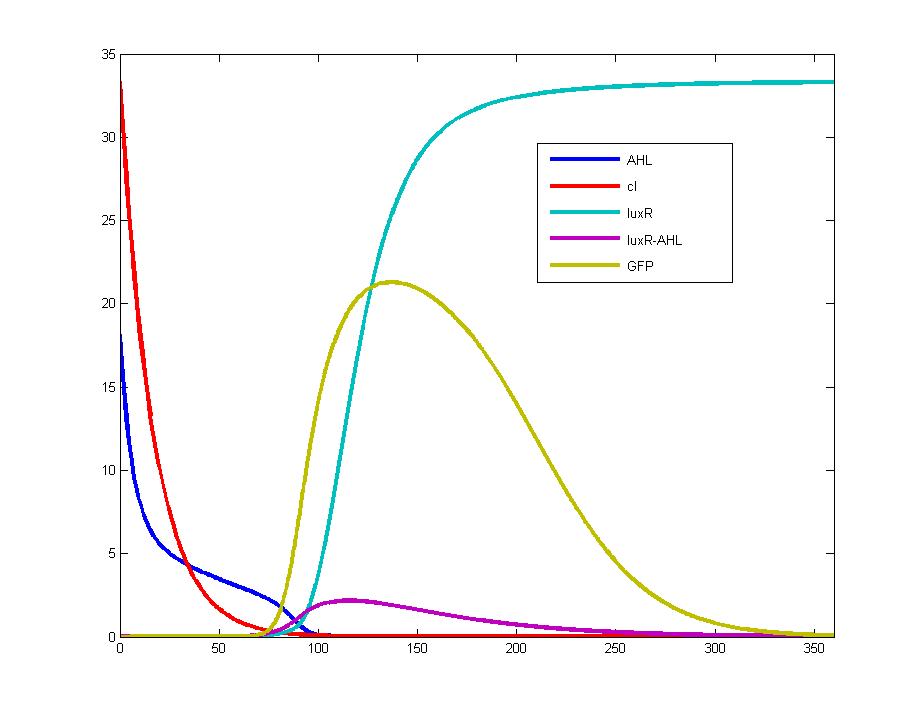Tianjin/FLIP-FLOP
From 2007.igem.org
(Difference between revisions)
Sunlovedie (Talk | contribs) |
Lovecarrot (Talk | contribs) (→Design) |
||
| Line 3: | Line 3: | ||
|width="960px" style="padding: 10px; background-color: #00CC00" | | |width="960px" style="padding: 10px; background-color: #00CC00" | | ||
==Design== | ==Design== | ||
| + | "Flip-flop" is the common name given to two-state devices which offer basic memory for sequential logic operations. Flip-flops are heavily used for digital data storage and transfer and are commonly used in banks called "registers" for the storage of binary numerical data. According to these elements, we designed the Genetically RS FLIP-FLOP whose output signal is regulated by additional input signal. Besides this, we modulate the performance of Genetically RS FLIP-FLOP to optimize our original design. | ||
[[Image:TJU1FD001.jpg|700px]]<br> | [[Image:TJU1FD001.jpg|700px]]<br> | ||
| Line 8: | Line 9: | ||
|- | |- | ||
|width="960px" style="padding: 10px; background-color: #66FF33" | | |width="960px" style="padding: 10px; background-color: #66FF33" | | ||
| + | |||
==Experiment== | ==Experiment== | ||
|- | |- | ||


